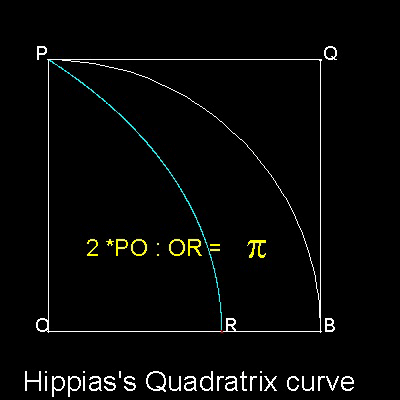
Hippias's(about 460BC-about 400BC)
invented a curve now called "Quadratrix", because it can be used for rectifying a circle.
But Hippias invented this curve for Angle Trisection, and called it "Trisectrix".
It is not clear whether Hippias himself knew that this curve
can be used to solve "Squaring Circle".

******* Hippias_circle_squarer_desc.dwg ******
For detail, go to the section Hippias-Quadratrix.
Archimedes (287BC - 212 BC) was the first to give a method of calculating p to any desired degree of accuracy.
His method is based on the fact that the perimeters of the polygons inscribed in a circle and circumscribed about the same circle give lower and upper bound values,respectively, for the circle's circumference.
Examples for hexagon and dodecagon are shown below.
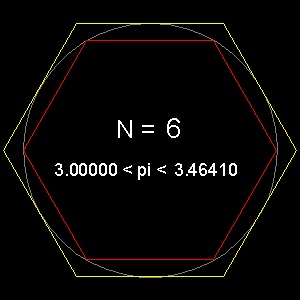
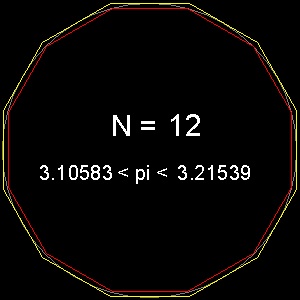
********* pi_hexagon.dwg *********
********** pi_12gon.dwg *********
In these drawings, the diameter is set to 10. So after opening the drawings, look at the values of perimeter.
(Use either "LIST" command or "Properties" option.)
One tenth (1/10) of the perimeter is the approximation for p .
He increased the number of sides for the polygon up to 96(k = 4), and obtained the following result.
3 (10/71) < p < 3 (1/7)
or in decimal,
3.14084 <p < 3.142858
This is an amazing feat considering that computation was done using ratio's(for example square root 3 was
replaced by 265/153, etc) and trigonometry was invented 1000 years after his time.
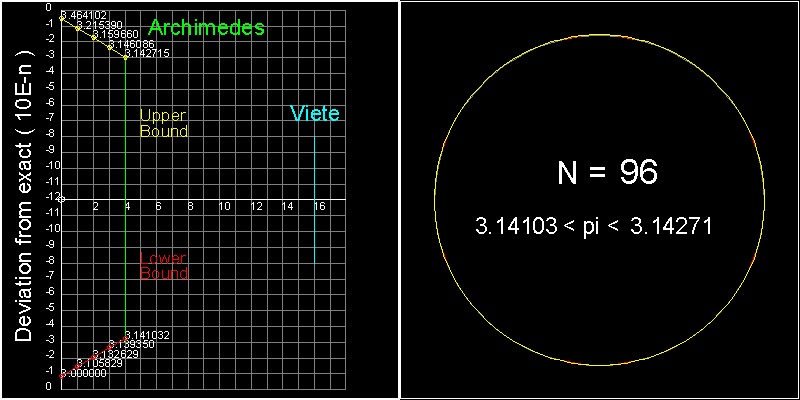
******************************** Archimedes_96_gon.dwg ********************************
You can see the process in animation.
For detail, go to the section Archimedes_Polygon Approximation.
Archimedes (287BC - 212 BC) ,in his book "On Spirals", used a spiral to get the length of pi.
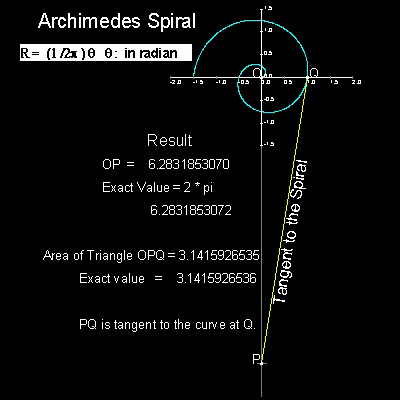
You can see the process in animation.
For detail, go to the section Archimedes Spiral.
All questions/suggestions should be sent to Takaya Iwamoto
Last Updated Nov 22, 2006
Copyright 2006 Takaya Iwamoto All rights reserved.